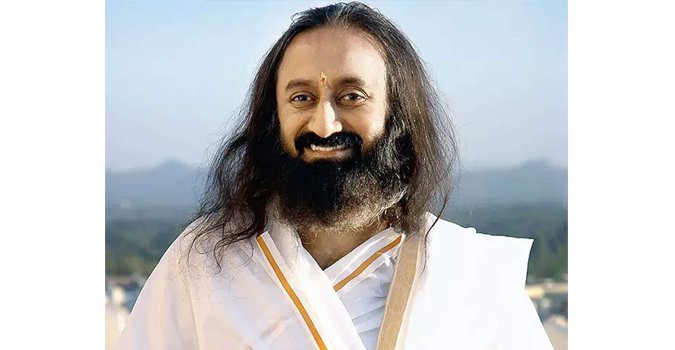Yoga Sutras of Patanjali: Commentary by Gurudev Sri Sri Ravi Shankar
Yoga Sutras of Patanjali: Commentary by Gurudev Sri Sri Ravi Shankar
We will begin with a story – the greatest and most effective way of conveying knowledge. What is Patanjali Yoga Sutras?Once upon a time long ago, all the Munis and Rishis approached Lord Vishnu to tell him that even though He (incarnated as Lord Dhanvanthari) had given them the means to cure illnesses through Ayurveda, people still fell sick. They wanted to know what to do when people got sick. Sometimes it’s not just physical illness, but mental and emotional illness too that needs to be dealt with. How does one get rid of impurities like anger, lust, greed, and jealousy? What is the formula? Lord Vishnu was lying on his bed of snakes — the serpent Adishésha with 1000 heads. When the Rishis approached Him, He gave them Adishésha (the symbol of awareness), who took birth in the world as Maharishi Patanjali. Yoga Sutras of Patanjali by Gurudev Sri Sri Ravi Shankar Hence Patanjali came to this earth to give this knowledge of yoga, which came to be known as the Yoga Sutras. Patanjali said that he was not going to discuss the Yoga Sutras unless 1000 people got together. So, 1000 people gathered south of the Vindhya Mountains to listen to him. Patanjali had another condition. He said that he would put a screen between him and his students, and told them that nobody was to lift the screen or leave. Everybody had to stay in the hall till he had finished. Patanjali stayed behind the curtain and transmitted his knowledge to the 1000 people who had gathered, and each of them absorbed this knowledge. It was an amazing phenomenon where the students could not believe how they were getting this knowledge. They could not believe how the master was making each of them understand this knowledge without uttering even a word from behind the curtain Everybody was amazed. Each one of them experienced such a blast of energy and enthusiasm that they could not contain it. But they still had to maintain discipline. One little boy had to go out to attend nature’s call. So, he left the room. He thought to himself that he would go quietly and return quietly. Another person became curious, “What is the Master doing behind the curtain? I want to see.” There is a lot of depth in this story. The Puranas don’t give any explanation, but it is for us to unlock the hidden meaning. So, what is that you all have to find out? How did the master convey the knowledge to everybody without uttering a word?What was the significance of the veil? The Yoga Sutras are best known for its reference to ashtanga, eight elements of practice culminating in samadhi, concentration of the mind on an object of meditation, namely yama (abstinences), niyama (observances), asana (yoga postures), pranayama (breath control), pratyahara (withdrawal of the senses), dharana (concentration of the mind), dhyana (meditation) and samadhi (absorption). However, its main aim is kaivalya, discernment of purusha, the witness-conscious, as separate from prakriti, the cognitive apparatus, and disentanglement of purusha from prakriti’s muddled defilements. You could think of the Yoga Sutras as a reference book to pick up and find whichever Sutra may be more relevant in our lives at that moment. Sometimes we can read a whole book and remember a fraction of the content or misread something over and over again, but the information only reveals itself when we’re actively seeking knowledge in the context of life’s demands.On starting a journey towards becoming a yogi, we have to at least be aware of how our perception and others’ perceptions have made an impression on how we make up our mind up about things, judge things and then make decisions or act based on these perceptions. We may directly experience something for ourselves or trust in the recounting or hearsay from another whom we trust. We may also not know something as we think we do if we have wrongly perceived something. We may believe in something that simply is not fact. We may recall or recollect something, which as we know, can be selective. It is the goal of the yogi to base perception on truth. This could mean that we are not to be influenced by external stimuli, wants or desires with the aim of hearing something, observing something and not drawing erroneous conclusions. It might mean to see something for what it is and not be swayed by a perceived connection or feelings of attachment. We can strive to practice non-attachment in order to be free from influence and to steady the mind. This can become easier by balancing the Gunas, which are qualities of energy and represented by Tamas (darkness and chaos), Rajas (activity and passion) and Sattva (beingness and harmony). The eventual outcome might be to even become free from the Influence of the Gunas to reach a state of Samprajnata Samadhi or distinguished contemplation. The practice of non-attachment may lead to Samadhi by total devotion and dedication to Isvara (Lord, God, Supreme Soul), which can be a theistic or non-theistic spiritual focus. Chanting the sacred sound of ‘Om’ in meditation can be an aid to blocking out all else to reach the Self. Chapter 1 of the Yoga Sutras: Concentration (Samadhi Pada) What is Yoga? (Yoga Sutras 1.1-1.4) 1.1 Now, after having done prior preparation through life and other practices, the study and practice of Yoga begins. 1.2 Yoga is the control (nirodhah, regulation, channeling, mastery, integration, coordination, stilling, quieting, setting aside) of the modifications (gross and subtle thought patterns) of the mind field. 1.3 Then the Seer abides in Itself, resting in its own True Nature, which is called Self-realization. 1.4 At other times, when one is not in Self-realization, the Seer appears to take on the form of the modifications of the mind field, taking on the identity of those thought patterns. Un-coloring your thoughts (Yoga Sutras 1.5-1.11) 1.5 Those gross and subtle thought patterns (vrittis) fall into five varieties, of which some are colored (klishta) and others are uncolored (aklishta). 1.6 The five varieties of thought patterns to witness are: 1) knowing correctly (pramana), 2) incorrect knowing (viparyaya), 3) fantasy or imagination (vikalpa), 4) the object of void-ness that is deep sleep (nidra), and 5) recollection or memory (smriti). 1.7 Of these five, there are three ways of gaining correct knowledge (pramana): 1) perception, 2) inference, and 3) testimony or verbal communication from others who have knowledge. 1.8 Incorrect knowledge or illusion (viparyaya) is false knowledge formed by perceiving a thing as being other than what it really is. 1.9 Fantasy or imagination (vikalpa) is a thought pattern that has verbal expression and knowledge, but for which there is no such object or reality in existence. 1.10 Dreamless sleep (nidra) is the subtle thought pattern which has as its object an inertia, blankness, absence, or negation of the other thought patterns (vrittis). 1.11 Recollection or memory (smriti) is mental modification caused by the inner reproducing of a previous impression of an object, but without adding any other characteristics from other sources.

Pinki Hazarika
Art of living Faculty
Regional Director GEP
Has been with the organisation since 20years, a meditator, a yoga enthusiast and an ardent devotee of Gurudev Sri Sri Ravishankar ji




